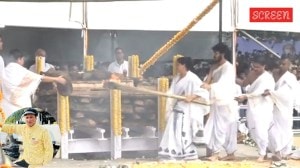Scientists breathe brave new life into `dead’ Gaur
New Delhi, October 12: American researchers have been able to successfully clone the highly endangered Indian animal, the Gaur or the Indi...

New Delhi, October 12: American researchers have been able to successfully clone the highly endangered Indian animal, the Gaur or the Indian Bison, found only in the jungles of South Asia. This is also the first time in the world that a wild endangered animal has been cloned. The downside: the find opens up a whole new ethical Pandora’s box, since with this find, humans could literally play God by resurrecting the dead.
A team of American researchers work at a laboratory called Advanced Cell Technology (ACT) in Worcester, Massachusetts, USA, where they took the DNA from the skin cells of a dead Gaur to literally bring it back to life. This seemingly dead hereditary material was subsequently inserted in the egg cells of an ordinary cow, whose genetic material had been removed. This fused living cocktail was then implanted in the womb of a surrogate cow where the embryo is developing well, says a report in the latest issue of the British magazine Nature.
The cloned gaur is expected to be born next month. This would be the first time that genetic material from a dead animal has been retrieved and brought back to life. Researchers could literally resurrect extinct animals or for that matter even long dead humans if human cloning ever became legal. All the boffins need is a very tiny amount of the complete genetic material.
Probably realising the God-like role they are playing, the researchers have already named the embryo `Noah’, after the Biblical story of Noah’s Ark. The same group of researchers also wants to undertake the cloning of giant pandas, using black bears as the surrogate mother.
These finding may give a boost to the efforts being made by an Indian researcher Dr. Lalji Singh, director of the Centre for Cellular and Molecular Biology, Hyderabad, who has proposed that he could in principle be able to clone and bring back to life right in India the now extinct Indian cheetah, using the leopard as a surrogate mother. Singh says all he requires is a pair of living Asiatic Cheetahs, which are still found wild in parts of Iran. This ambitious proposal is awaiting clearance within the long-winding portals of the Indian government.
The highly endangered Gaur is found over wide areas in jungles. A full grown animal can weigh up to 900 kg, and it looks like a hybrid between a cow and a buffalo. Some researchers have already expressed apprehensions of using closely related species for the purposes of cloning since it could lead to the same problems that inter-species transplantation of organs poses, which is the transfer of new diseases between different species.
Photos



- 01
- 02
- 03
- 04
- 05




























